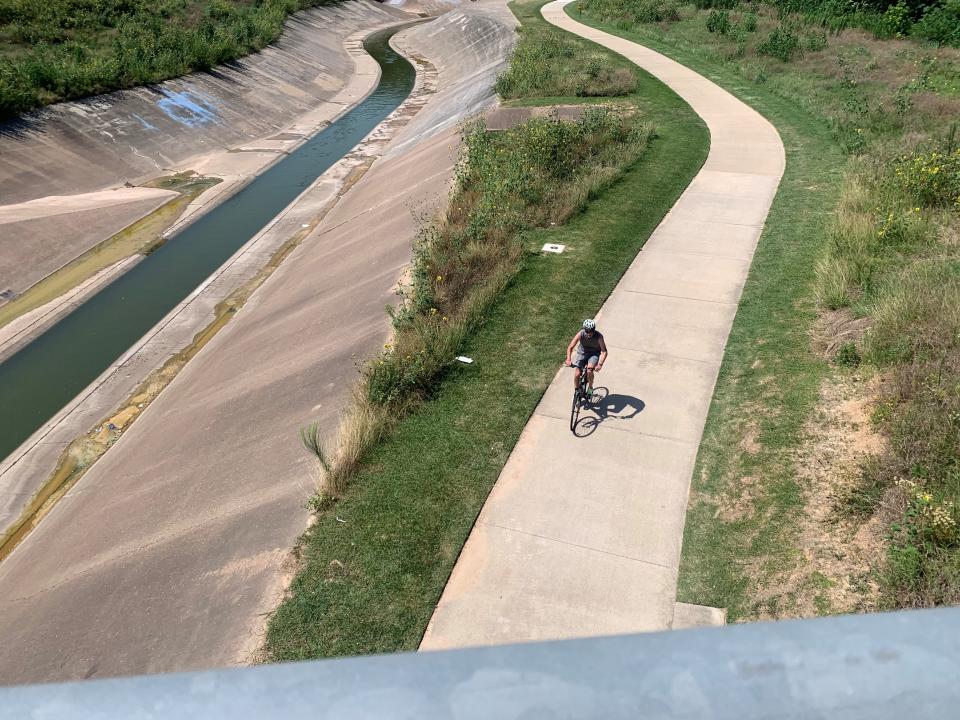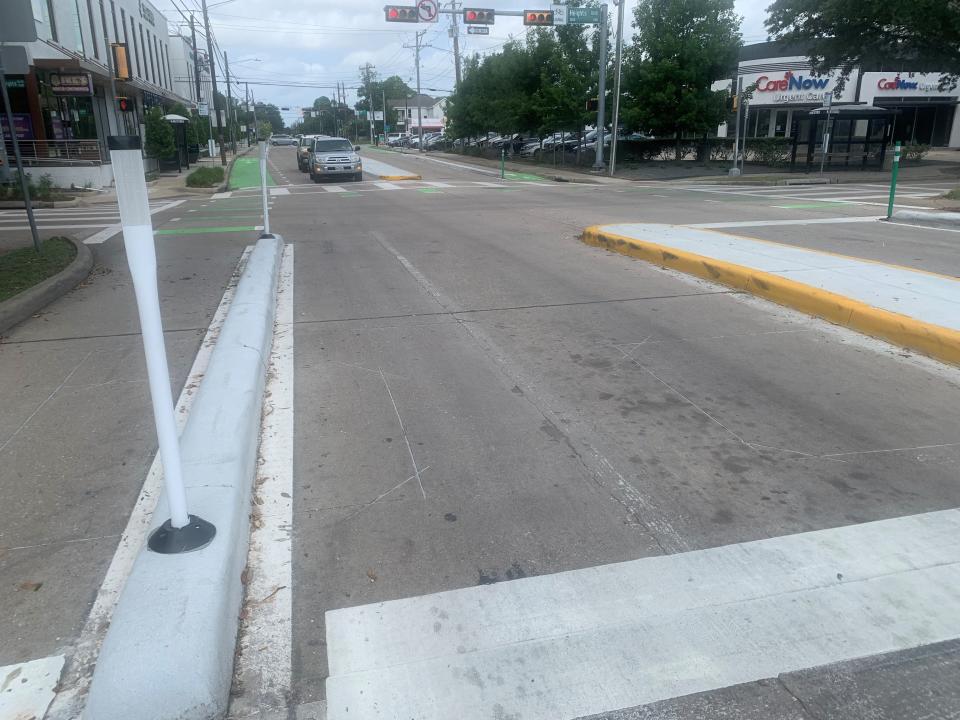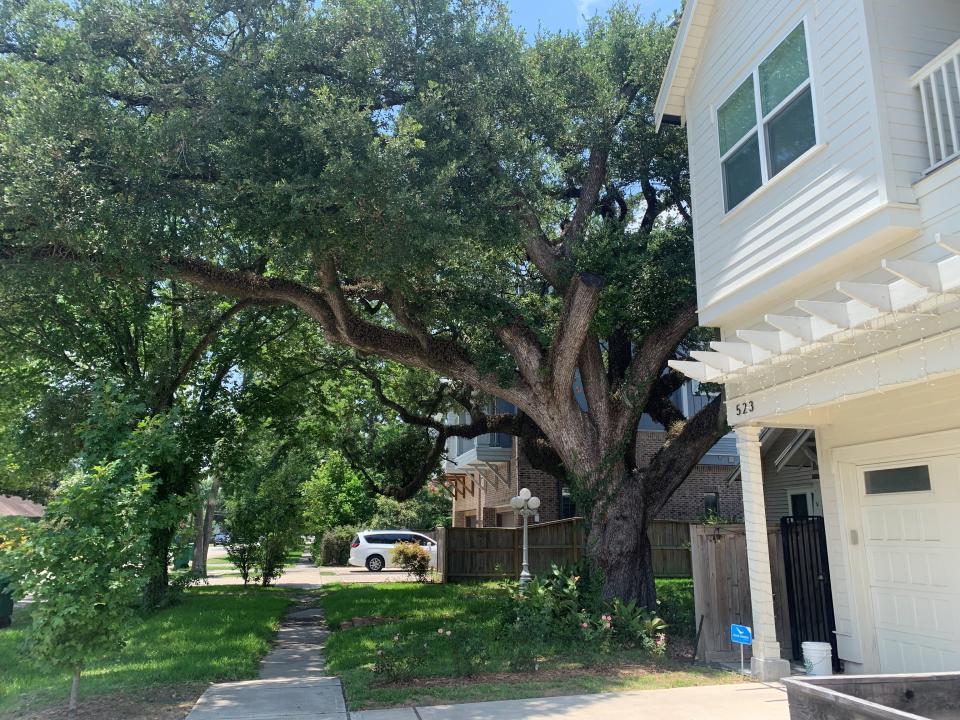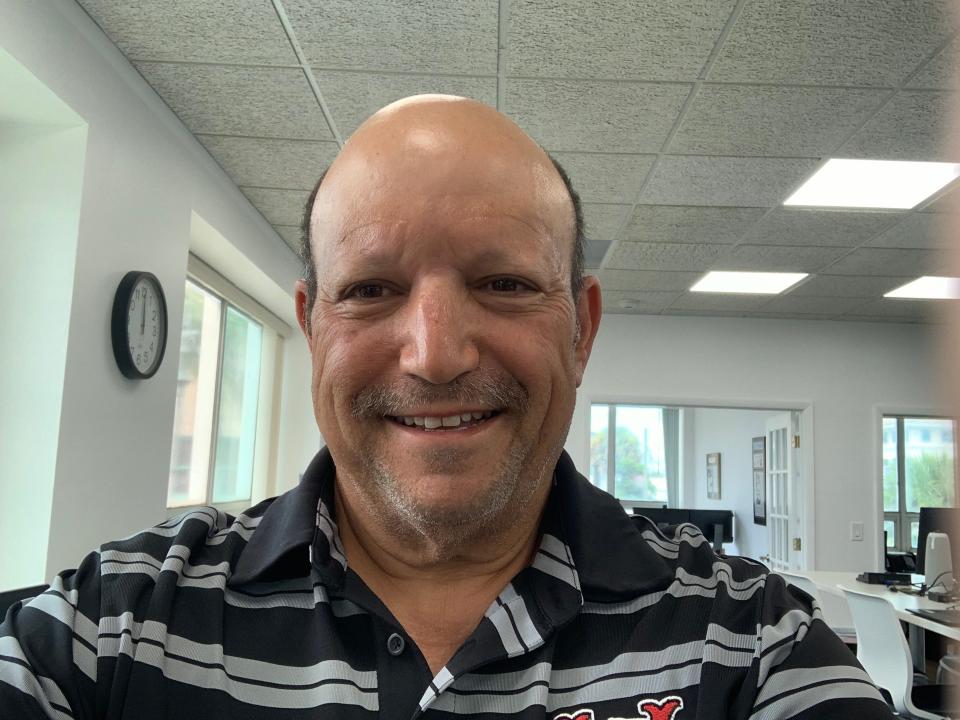Houston means one step closer to road diet while Vero Beach plots Twin Pairs lane cuts
I couldn’t help but have the Twin Pairs on my mind the last full week of June.
Not because Vero Beach City Council agreed to pay consultants an additional $114,380 to show how eastbound and westbound State Road 60 can be narrowed from seven to four lanes.
I was off and spent the week walking almost 65 miles in Houston, where the thermometer reached 104 degrees. It was the fourth time I stayed just north of Interstate 10 in The Heights area, enjoying many things younger people want to see in downtown Vero Beach.
The Heights has it all ― older neighborhoods with beautiful, smaller lots and old homes, larger newer ones, apartment buildings, tree-lined streets (with maintained, buckled or no sidewalks) within walking distance of supermarkets and every service, food or dining establishment imaginable.
It's by no means a utopia: There are abandoned, smaller homes next to million-dollar ones, with industrial businesses and rundown apartments mixed in. There are few cul-de-sacs and gated communities.
On my last night there ― had it not been 90-plus and storming ― we would have walked from our abode to the four "bars" we patronized: wine, sushi, whiskey, cupcake. Each establishment was full of people younger than me, my experience almost everywhere there.
There’s a lot going on in the nation’s fourth-largest city, particularly in The Heights, we can learn from in Vero Beach.
Because of the proximity of homes to amenities, there’s a lot of walking and bicycling. It’s easier because cement and dirt trails ― separate from the roads ― run through the area.
Bayou greenway attracts walkers, bicyclists

More on downtown: Will alleged public sex acts on Vero Beach's main street spark action on homeless?
The latest: In dead of summer, Vero Beach council plans to cut lanes on Indian River County main road
Flip-flop: Big change in Vero Beach: Moore now wants parking, fewer lanes through downtown
Related: Oak survives Ian, Nicole: Vero Beach officials give tree reprieve; sign of times
Mind-boggling: Twin Pairs: Vero Beach City Council trying to fix a problem that does not exist
Indian River County traffic: Clogged roads anomaly, or is Vero Beach area now trying to catch up to growth?
The big one ― along the city’s large drainage ditches Houstonians call the bayou ― connects various portions of the city. Just imagine if we had safe, vehicle-free paths along drainage ditches and canals and on other public property in Indian River County.
The Heights has smaller, neighborhood schools (including middle and high schools), where playgrounds and fields are open to the public during non-school hours. It also has numerous other larger or pocket parks (along the lines of Vero Beach’s Troy Moody or Charles parks) that are easy to walk to.
The neighborhood also has its own massive, super-ugly version of Vero Beach's Twin Pairs, which often is the most efficient way to travel the nearly three miles between interstates 10 and 610.
And, much like the ongoing controversy in Vero Beach — where a group of council members is hellbent on narrowing State Road 60 from seven to four lanes to add parking downtown or whatever the goal du jour is — The Heights has its own road-diet initiative.
Just not on its main twin pairs.
On 11th Street, one of several decently traveled, two-way east-west streets, the city eliminated two lanes and installed short, ugly cement barriers to separate bicycle and vehicle traffic. Some residents and merchants complain about more congestion and difficulty making turns, not that I saw such problems while on foot.
How convenient is it to cross the road?

That said, I walked across the street at various locations at least a dozen times in six days and never saw a bicyclist. I also found it more difficult or confusing to cross the street than I had in years past.
Why?
It seemed like, with vehicle travel lanes reduced, there was a longer wait for vehicles passing me. Before the narrowing, twice as much traffic could get through in the same amount of time, making my wait shorter.
Sometimes, there was limited traffic and I could cross without having to go to a corner or crosswalk. Then I’d have to step over multiple concrete dividers to cross the street. The dividers could be safety dangers for less-mobile folks.
The most “pedestrian-friendly” part of The Heights had nothing to do with traffic.
I figured it out my first day back home in Vero Beach, when I took an early afternoon walk. It reminded me of when I started working in Vero Beach’s downtown and parking at the courthouse garage.
Urban area does it better than suburbia? Maybe not

In summer, it was awfully hot walking from the garage to my office on 14th Avenue. There was little shade, from trees, awnings, etc.
Walking in my Indian River County neighborhood in mid-80s weather, I felt hotter than in 100-plus-degree Houston. It wasn’t the humidity. It was the lack of shade on my neighborhood's sidewalks that time of day.
In Houston, I could cross in the middle of neighborhood streets to stay in the shade. Larger streets also seemed to have shade.
Could an urban area in the nation’s fourth-largest city have more shade than Vero Beach, which once prided itself in preserving oak hammocks and nature?
The most danger I felt walking in Houston was on the bayou, far away from cars, but below road overpasses where people evidently were camping illegally. The other peril: trying to cross a busy two-way street, with a median. Still, it seemed safer than trying to cross State Road 60 near the Indian River Mall — and way safer than trying to cross U.S. 1 in Vero Beach and Fort Pierce.
As for downtown Vero Beach, it’s a picnic for pedestrians. I don’t usually cross the Twin Pairs downtown anywhere but at the traffic signals (the only place with crosswalks, much to my chagrin). It's pedestrian-friendly, though it could use more shade.
Vero Beach council ditches compromise plan
Though wrecks occur, accident studies show the Twin Pairs are safe. The two one-way legs of State Road 60 have been downtown for more than 30 years, and, as I’ve written before, more people (four?) have been caught having sex in the open between the pairs than have been killed on the roads (none).
Recently, Vero Beach Mayor John Cotugno called the Twin Pairs narrowing “the zombie of Vero Beach” because the issue never seems to die.
He’s right: There are strong passions on both sides of the issue. At least one side, which includes some downtown property owners, refuses to compromise.
A different City Council came up with a middle-ground plan in 2021. That council would have eliminated only one lane, not included parking, widened bike lanes and added crosswalks. That wasn't enough for Councilman Rey Neville, who likes to reminisce about growing up in sleepy 1940s and 1950s Vero Beach, or new council members John Carroll and Linda Moore, who work downtown, the latter owning a restaurant and who, while campaigning, said she was OK with the compromise plan.
I agree with them on numerous other issues. We'd all like to see a more vibrant downtown, though, as I've said before, it's the most active in the 38 years I've lived here. I think the key is getting more residents to live downtown.
But increasing traffic density on the rapidly growing county's main east-west road is not a viable solution: It's a potential problem that will upset the very people needed to support plans to increase residential density.
Neville, Carroll, Moore proceed at their own peril.
In Houston, the Alliance for Reasonable Traffic Solutions — whose organizer seems like a pretty reasonable gentleman — hasn't had much luck dealing with massive city bureaucracy. Sadly, there seems to be more traffic on small streets with homes since the road diet happened.
Vero Beach is not so big. It holds elections every two years (qualifying ends in August for the November election, when Cotugno's and Neville's terms are up). Residents seeking reasonable traffic solutions here should organize to ensure their voices are heard.

Hopefully the temperature later this summer, when Vero Beach continues to discuss road-elimination plans, doesn't rise to the levels they've been in Houston. Things could get unpleasant.
Let's hope this council reconsiders and stops refighting battles that have divided locals for more than 30 years. It's such a waste.
This column reflects the opinion of Laurence Reisman. Contact him via email at larry.reisman@tcpalm.com, phone at 772-978-2223, Facebook.com/larryreisman or Twitter @LaurenceReisman.
If you are a subscriber, thank you. If not, become a subscriber to get the latest local news on the latest local news on the Treasure Coast.
This article originally appeared on Treasure Coast Newspapers: Vero Beach Twin Pairs: Houston shows what pedestrian-friendly can mean

